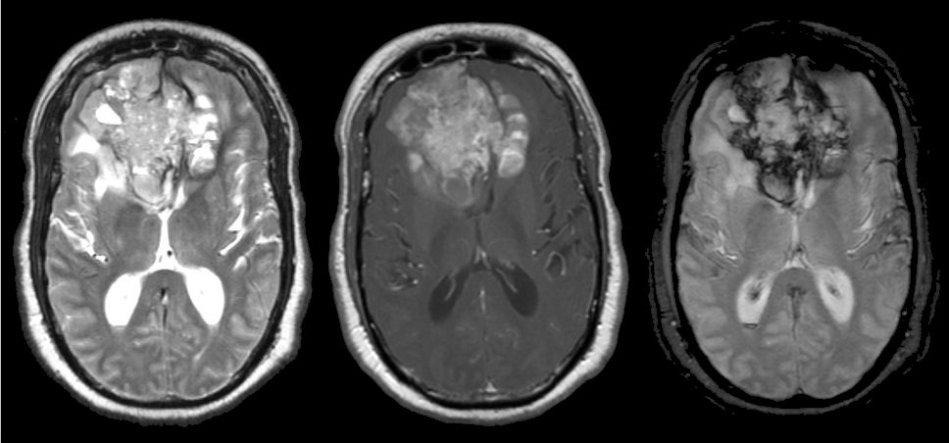

![]()
![]()
![]()
| Glioblastoma Multiforme (Frontal Lobe).
(Left) T2-weighted axial
MRI; (Middle) T1-weighted with gadolinium axial MRI; (Right) Gradient echo
(GE) axial MRI. Note the large enhancing mass in the
frontal lobes. This pattern of a frontal tumor crossing over the midline to
the contralateral frontal lobe via
the corpus callosum is known as a "butterfly" pattern. On the gradient echo image, the dark signal
signifies
old blood. Biopsy showed glioblastoma multiforme. Glioblastoma multiforme
(GBM), also referred to as a Grade IV astrocytoma, is the most
common type of primary brain tumor. It is a malignant tumor that
carries a very poor prognosis, and typically results in death in 2
years. On CT and MRI imaging, the tumor is often large, irregular
and infiltrative, and located in the white matter with surrounding
edema. Histologically, the tumor is highly cellular and anaplastic
with necrosis. Associated hemorrhage is not uncommon. Clinically, patients present with slowly progressive focal neurological signs, and signs of increased intracranial pressure (i.e., headache, nausea, and vomiting). Seizures may be an initial presentation or may occur later in the course. |
Revised
11/25/06.
Copyrighted 2006. David C Preston